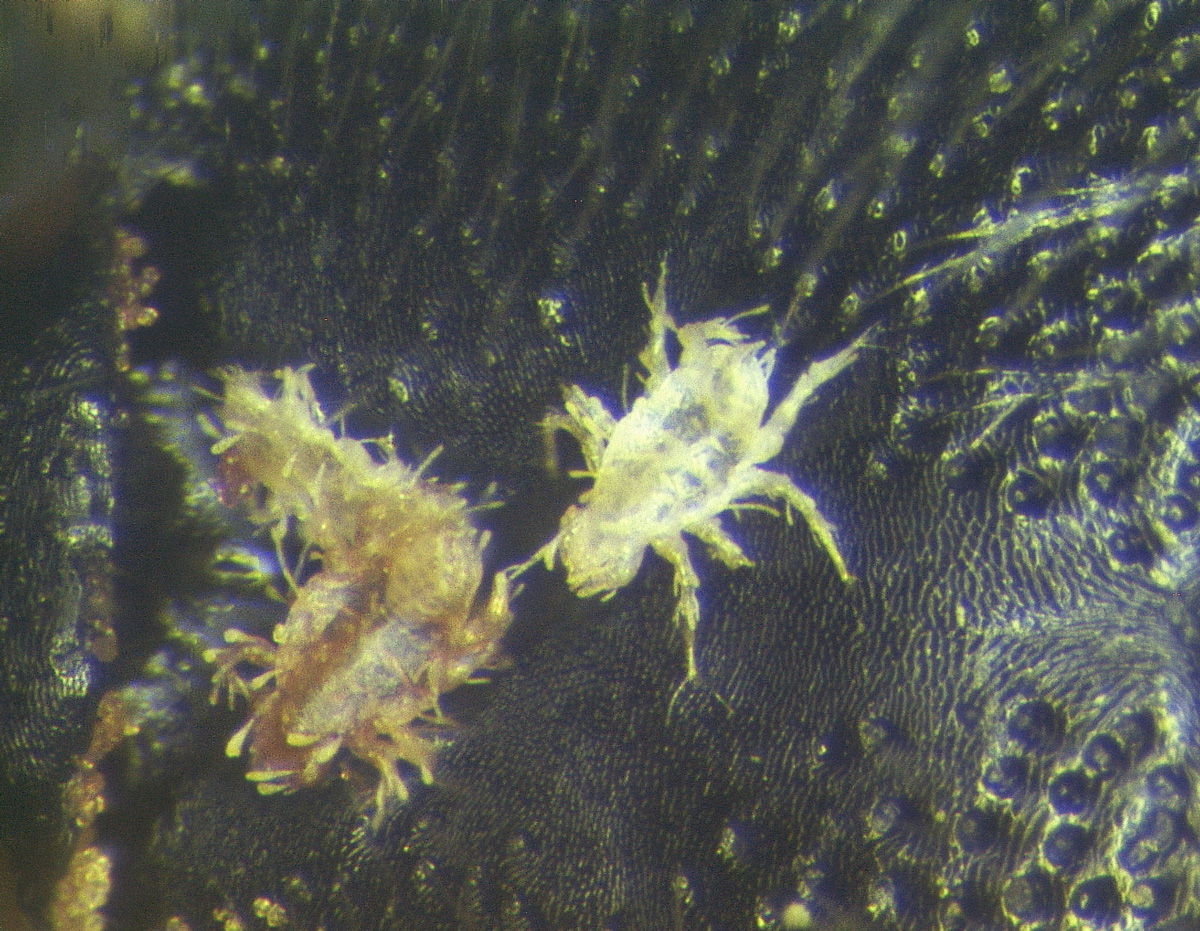Bee Mites : Acari : Acariformes : Trombidiformes : Cheyletidae
Genus Nodele Muma, 1964
Nodele Muma, 1964: 252 (type species Nodele calamondin Muma, 1964 by original designation); Volgin, 1969: 161; Fain and Bochkov, 2001a: 54.
Neocheletophyes Volgin, 1965: 296 (type species Cheletophyes philippinensis Baker, 1949 by original designation). Synonymized Volgin, 1969.
Cheletophyes: Baker, 1949: 287 (part.).
Type speices Nodele calamondin Muma, 1964
Material (show database records).
General Description. This genus includes five species collected from forest litter, under bark, on bostrichid beetles, galleries of bark beetles, nest of sparrow (Passer), and grain in the Holarctic, Oriental, and Afrotropic realms (Fain and Bochkov, 2001a, Kuznetsov, 1977; Thewke and Enns, 1968; Wafa and Soliman, 1968).
Biology is only known for Nodele calamondin. It is a predator of other mite species and of small insect larvae. Unmated females produced only male offspring (arrhenotoky), which subsequently mated with their mothers to produce female as well as male offspring. Like other representatives of the family, males have one nymphal stage in their development and females have two nymphal stages. Males guarded the quiescent deutonymph females and mating took place as soon as the females emerged as adults. Unmated females lived more than twice as long as mated females and laid about 89% of the number of eggs laid by their mated sisters. The average duration of a generation was 62 days at 25 degrees C and 34 days at 29.5 degrees C. Net reproduction rate (ratio of female births in two successive generations) was 20 at 25 degrees C and 34 and 29.5 degrees C (after Barker, 1992). There is a single record of three females of Nodele (Aztecocheyletus) conquistador collected from the propodeum of the megachilid bee Aztecanthidium tenochtitlanicum (Bochkov & Klimov, 2004).
Distribution (show map).
Species associated with bees
References
Image Gallery
B. OConnor and P. Klimov ©
Created: April 26, 2012
Last modified: 

